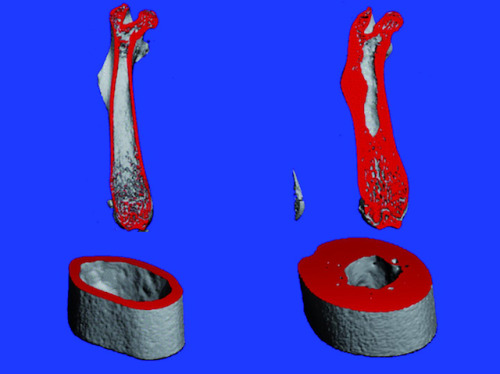
Bone Booster
Cells within a person’s bones are in a balancing act between those that produce new boney material (osteoblasts) and those that dismantle and reabsorb existing bone (osteoclasts). In older adults, however, this balance tends to favour reabsorption leading to progressive loss of bone mass and weakening of the structure (osteoporosis). It has been discovered that many people with early onset osteoporosis have mutations in a secreted signalling protein called WNT1. And, now researchers have found that mice with Wnt1 deficiency are also more prone to bone fractures. Conversely, mice engineered to produce excess Wnt1 in their osteoblasts have considerably denser bones (right) than control animals (left). Importantly, this bone-strengthening effect was seen when Wnt1 was increased in adult and elderly mice as well as young animals. The results indicate that boosting WNT1 may one day be a therapeutic strategy for treating osteoporosis in people.
Written by Ruth Williams
- Image from work by Julia Luther, Timur Alexander Yorgan and Tim Rolvien, and colleagues
- Department of Osteology and Biomechanics, University Medical Center Hamburg-Eppendorf, Hamburg, Germanyl
- Image copyright held by the original authors
- Research published in Science Translational Medicine, November 2018
You can also follow BPoD on Instagram, Twitter and Facebook
Archive link





Комментариев нет:
Отправить комментарий